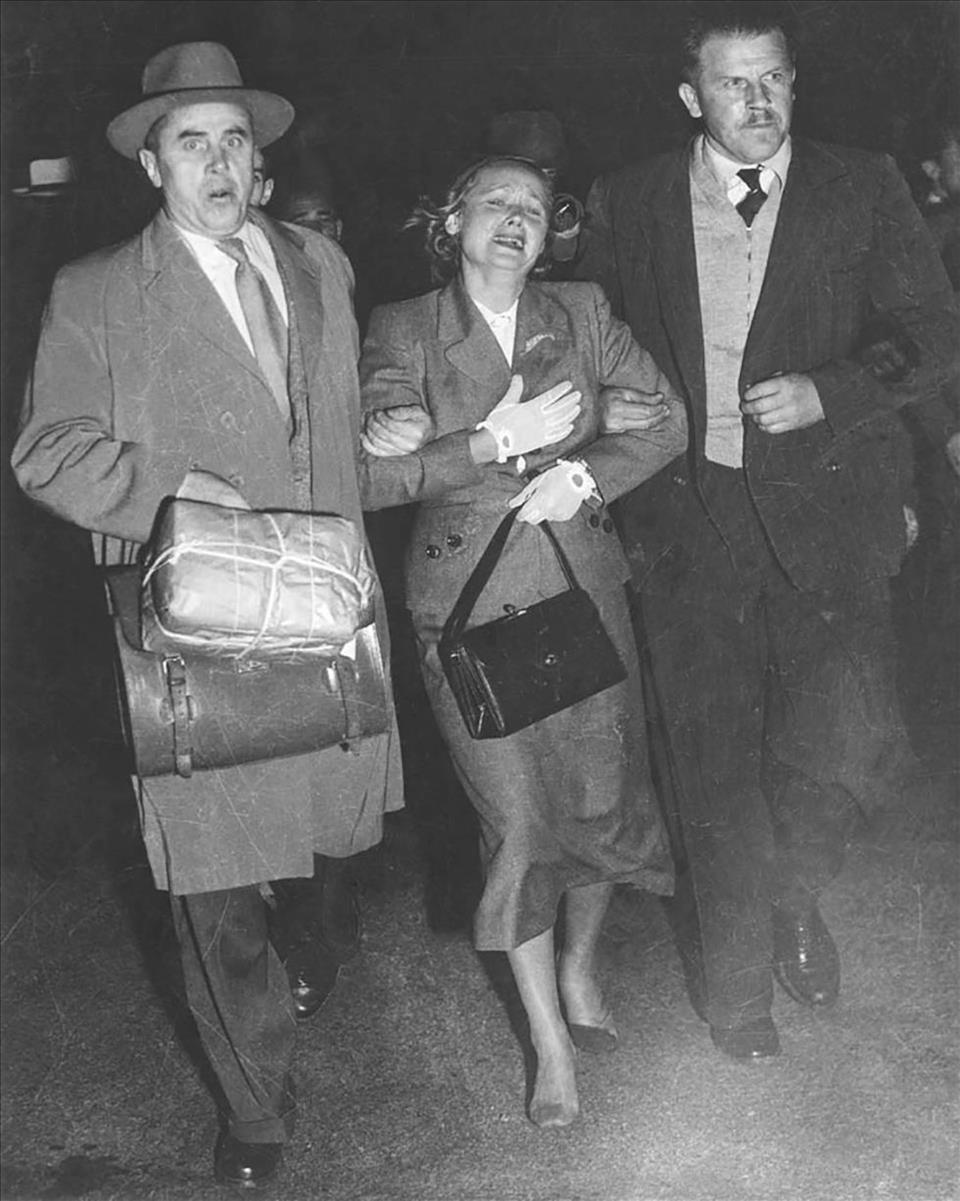
The Petrov Affair: How A Real-Life Cold War Defection Became A Soothing Spy Story For Anxious Australians
The story dominated press coverage for months. With little experience of international spying beyond the narratives of popular culture, the Australian media told the story of the Petrov affair using the familiar formulas of spy fiction and film. This coverage transformed Australia's unsettling involvement in the world of international espionage into thrilling and sensational entertainment.
This framing – as an exciting but familiar drama – may have helped Australians manage their anxiety about the threat posed by Soviet espionage.
Read more: Chinese 'spy' case may be the greatest challenge to Australian security since Petrov – but caution is needed
Hollywood spy drama come to lifeThe key plot points of the Petrov affair are straightforward. After a carefully planned Australian Security Intelligence Organisation (ASIO) operation, Vladimir Petrov – a KGB officer based in the Soviet embassy in Canberra – was convinced to defect to Australia in 1954, providing information in exchange for political asylum.
From the beginning, the Australian press portrayed the events of the Petrov affair as entertainment for their eager readers.
As the Bulletin put it at the time, Australians had long read of espionage in Europe and
Now their own country was a world in which Hollywood spy drama had come to life.
In media reports Australians were promised the Petrov affair contained
And it featured an all-star cast. As one report put it:
Vladimir Petrov and Evdokia Petrov inside the safe house in which they were held following their defection to Australia. Photograph presented as evidence to the Royal Commission on Espionage. National Archives Australia Mrs Petrov defects
The undoubted“star of our biggest real life spy story”, as one report called her, was Evdokia Petrova, Vladimir's glamorous wife.
From her first interview , given the day after her husband's defection, Evdokia looked the part of a classic Hollywood damsel in distress.
This effect was only increased days later, when Evdokia appeared to be forcibly dragged on to a plane to the Soviet Union by two armed guards.
Pictures of Evdokia's distressed face as she was led toward the plane, one shoe lost in the scuffle, were plastered across every newspaper in the country.
When Evdokia herself decided to defect a few hours later, Australia rejoiced .
Evdokia, according to Woman's Day, was
Indeed, journalists seemed in agreement that for
The show beginsPetrov's claims of a Soviet spy ring in Australia prompted a royal commission soon after his defection.
The first hearings of this inquiry were as heavily anticipated as the opening of a Hollywood blockbuster .
Journalists spoke of the“the blood-chilling revelations” on offer, and of“the shadow of Moscow” that seemed to linger over the inquiry .
Journalist Hal Richardson set the scene for readers of the Melbourne Argus:
The leading manAlthough Vladimir Petrov was undeniably a main character in the drama, his appearance at the Royal Commission was something of a let-down.
Rather than the dashing and handsome secret agent the Australian public had expected,“the leading man, Petrov himself” was instead“no matinee idol”.
Those who attended the inquiry“expecting a chapter, or anyway a page or two, out of an Eric Ambler spy novel,” came away disappointed.
“Petrov looked nothing like a spy to me,” admitted one journalist.
Instead, one reporter opined , Petrov was“just a podgy man in a dark-blue suit”.
Others observed“Petrov would not fit any fictional portrayal of an international spy”.
That these writers felt they knew what a spy should look like highlights the strong influence of popular culture on public perceptions of the Petrov affair.
The familiarity of formula fiction eases anxietyThe Australian media coverage of these events transformed the country's brush with the clandestine events of the Cold War into something closer to entertainment.
The Petrov affair was“the spy thriller [that] outdoes fiction” and the Australian public was its audience.
As my research outlines, the Australian press and public leveraged their knowledge of popular culture to interpret events, using the common formulas of espionage fiction to understand the startling revelations stemming from Petrov's defection.
To some extent, this dynamic continues today and many Australians still view the work of intelligence agencies and their staff through the lens of popular culture.
The secrecy that surrounds intelligence means the representations of intelligence found in popular culture are often the only way that hidden activities can be known and understood .
Read more: ASIO history: chasing Russian spies and local communists

Legal Disclaimer:
MENAFN provides the information “as is” without warranty of any kind. We do not accept any responsibility or liability for the accuracy, content, images, videos, licenses, completeness, legality, or reliability of the information contained in this article. If you have any complaints or copyright issues related to this article, kindly contact the provider above.






















Comments
No comment